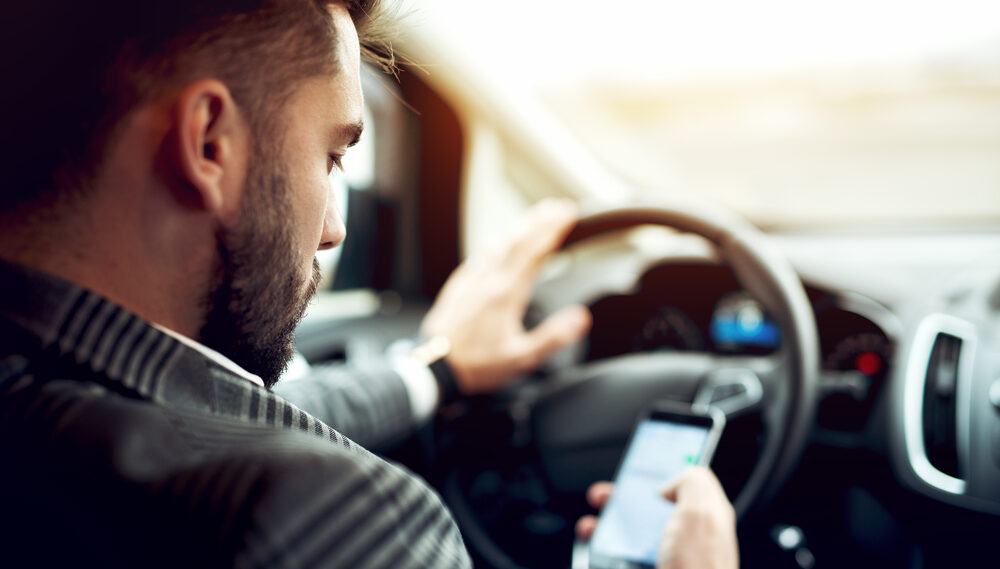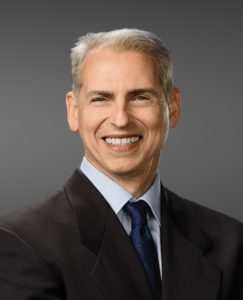
Distracted driving ranks as one of the most dangerous mistakes that motorists can make. While some drivers may see no harm in quickly reading a text, reaching for something in their purse or the glove compartment, or having a bite to eat while behind the wheel, such distractions can easily lead to devastating collisions with other motorists, bicyclists, or pedestrians.
As a motorist, you need to understand what kinds of behavior constitute distracted driving, the dangers that distracted driving poses, and what options you may have if you find yourself involved in a crash caused by someone who wasn’t paying attention behind the wheel. A car accident attorney can help you pursue legal claims to recover compensation for injuries, vehicle damages, and other expenses and losses that you suffer due to a distracted driving accident in Bakersfield.
What Is Distracted Driving?
Distracted driving refers to any activity that diverts a motorist’s attention from the task of driving. Safe driving requires a motorist’s full attention. Any actions that take part or all of a driver’s focus off driving create a substantial risk that the driver may get into an accident.
Drivers can become distracted in three ways:
- Visual distractions. A visual distraction requires a driver to take their eyes off the road or other details when driving, such as the speedometer.
- Manual distractions. Manual distractions involve a driver taking one or both hands off the steering wheel, except when changing gears in a manual or automated manual vehicle.
- Cognitive distractions. A cognitive distraction occurs when a driver’s mental focus and effort drift off the task of driving, with the driver beginning to think about anything other than the safe operation of their vehicle.
Many common distracted driving behaviors involve two or even all three types of distractions. For example, texting while driving requires a driver to take their eyes off the road to read the phone screen, a hand off the steering wheel to operate the phone, and their attention off the road to read and think about the text.
Why Is Distracted Driving Dangerous?
Distracted driving is one of the most significant risks a motorist can take behind the wheel. It is as dangerous as intoxicated driving or reckless or aggressive driving. A driver who becomes distracted no longer has complete control over their vehicle or the ability to respond to an emergency or hazardous situation.
For example, the National Highway Traffic Safety Administration says in the time it takes to read a text message on a cell phone while driving at 55 miles per hour, a driver’s vehicle will have traveled about the length of a football field. That means that a driver reading a text will have driven approximately 100 yards with their eyes effectively closed.
Many drivers may engage in distracted driving without even realizing it. Some activities, such as interacting with passengers or becoming engrossed in an audiobook, radio show, or podcast, can be a mental distraction for a driver, whose attention may drift off the road. Drivers on long road trips may also lose concentration and focus on the road as they begin to daydream or fall into a phenomenon known as “highway hypnosis.”
Distracted driving can lead motorists to commit dangerous mistakes on the road, like running red lights or stop signs, speeding, or failing to slow down for stopped traffic. Any time a driver does not focus on the road and the safe operation of their vehicle, they pose a danger to themselves, their passengers, and others on the road.
Common Types of Distracted Driving
 There are various ways drivers become distracted behind the wheel.
There are various ways drivers become distracted behind the wheel.
Common distracted driving behaviors that motorists engage in include:
- Using a cell phone, including texting, emailing, or engaging in social media
- Adjusting the radio, climate controls, or navigation system
- Eating or drinking
- Grooming or applying makeup
- Reaching around the passenger cabin for an object
- Interacting with passengers or pets in the vehicle
- Reading a book, magazine, newspaper, map, or computer or tablet screen
- Becoming engrossed by an audiobook, podcast, or radio show
- Reading billboards or watching other roadside diversions, such as looking at another crash scene
- Daydreaming
- Highway hypnosis
Distracted Driving Statistics
According to the U.S. Centers for Disease Control and Prevention (CDC), approximately 3,000 people died in motor vehicle crashes involving a distracted driver in one recent year, with another approximately 400,000 people suffering injuries in distracted driving accidents.
About one in five fatalities in distracted driving accidents involved someone not in a vehicle, such as a bicyclist or pedestrian. The CDC further found that younger drivers posed a greater risk of distracted driving, especially due to cell phone use behind the wheel.
For example:
- A higher percentage of fatal distracted driving accidents nationwide involved a distracted driver aged 15 to 20 than drivers aged 21 and older.
- A survey of high school students found that 39 percent of respondents admitted to texting or emailing while driving within the previous 30 days.
- Texting and emailing while driving becomes more common as teens get older. While only 16 percent of 15-year-old survey respondents admitting to using a cell phone while driving within the last 30 days, 51 percent of 17-year-olds and 60 percent of 18- to 19-year-olds admitted to using a cell phone while driving in the previous 30 days.
In California, a survey by the Office of Traffic Safety (OTS) found that over 74 percent of Californians believed cell phone use while driving posed the most significant safety concern on the state’s roads.
Furthermore, OTS found that distracted driving caused approximately six out of every 10 accidents involving teen drivers in California, with motor vehicle crashes the leading cause of death for 16- to 19-year-olds in the state. The state agency also found that distracted driving increased the risk of a motor vehicle accident by three times.
According to the California Highway Patrol, in one recent year, California saw 99 fatalities and 9,272 injuries from distracted driving accidents.
Of these:
- Over 600 injuries and 17 deaths occurred in accidents involving the handheld use of a cell phone, while over 200 injuries and two fatalities occurred in accidents involving the hands-free use of a cell phone
- Seven deaths and 219 injuries occurred in accidents involving the use of other electronic equipment
- Three deaths and 341 injuries occurred in accidents involving a driver adjusting their radio
- Five fatalities and 225 injuries occurred in accidents involving a driver distracted by eating
- More than 200 injuries occurred in accidents where children in the vehicle distracted the driver, while one death and 92 injuries occurred in accidents involving distractions from an animal in the vehicle
- 30 injuries occurred in accidents involving distraction from grooming or applying makeup
- 23 injuries occurred in accidents involving a driver distracted while reading
California Distracted Driving Laws
California Vehicle Code §23123 restricts the use of cell phones while driving. Specifically, a driver may not use a wireless telephone while driving except in hands-free mode. Drivers may not use cell phones in handheld mode except to make calls to emergency services.
Drivers under 18 may not use cell phones in either hands-free or handheld mode except to make calls to emergency services. Drivers who violate the statute face penalties that include fines and points on their driving records, with penalties increasing for subsequent violations.
Is a Distracted Driver Always at Fault for an Accident?
Drivers must always keep their full attention on the road when moving. A motorist who engages in distractions while driving may be responsible for causing a motor vehicle accident. However, distraction while driving does not necessarily mean that motorists will be at fault for crashes.
Other drivers may share responsibility for causing an accident. For example, a driver who cuts in front of a distracted driver and immediately slams on their brakes might be partially at fault for an accident due to unsafe or reckless driving.
In California, the state’s comparative negligence rule in California Civil Code §1714 governs liability for accident injuries. The law states that financial liability for injuries and losses must correspond to the percentage of fault of each responsible party, including the injured victim if they bear any responsibility for their injuries.
However, distracted drivers typically bear most, or all of the fault for motor vehicle crashes. In addition, a driver’s conviction for violating California’s law banning handheld cell phone use while driving may serve as persuasive evidence that the driver’s negligence in breaking the law caused the accident.
How to Prove That Distracted Driving Caused an Accident
Drivers usually will not admit to distracted driving, including texting or emailing while driving, following an accident. A person injured in a distracted driving accident may need to rely on other evidence to help prove that the at-fault driver was driving while distracted in the moments leading up to the crash.
Examples of helpful evidence to prove distracted driving include:
- Cell phone data logs that show when a phone was being used
- Cell phone tower logs showing the times of calls, text messages, and data usage
- Time-stamped emails, text messages, and social media posts indicating that a driver sent messages while behind the wheel
- Surveillance or traffic camera footage depicting a driver engaged in distracted driving behaviors like texting, eating, or applying makeup
- Testimony from eyewitnesses who saw a driver involved in distracted driving behaviors
- Logs from the vehicle’s event data recorder (“black box”) that prove a driver failed to brake or steer to avoid a collision
Steps To Take After a Distracted Driving Accident
You may have a right to pursue financial recovery for injuries and vehicle damage incurred in an accident caused by a distracted driver.
Some actions you should take to preserve your legal rights and begin pursuing compensation include:
- Report the accident to law enforcement authorities as soon as possible, ideally from the accident scene
- Take photos and videos of important details at the crash scene, such as vehicle damage, skid marks on the road, traffic controls, weather/lighting/traffic conditions at the time of the accident, and any visible injuries you sustained
- Seek prompt medical attention at the hospital or from your primary physician to document the injuries you suffered in the accident
- Follow through with your treating provider’s treatment plan and instructions, and do not put off or stop treatment of your injuries
- Gather bills, invoices, and receipts of expenses you incurred due to the accident, and your pay stubs or income statements if you miss work or suffer a reduction in earnings due to your injuries
- Avoid discussing the accident or your injuries on social media
Finally, reach out to a distracted driving attorney as soon as possible to learn more about your legal rights and to get started pursuing financial compensation from the at-fault distracted driver.
Pursuing Financial Recovery After a Distracted Driving Accident

Mickey Fine, Car Accident Injury Attorney
A collision with a distracted driver can cause significant injury and property damage. You deserve to hold that at-fault driver accountable for the harm they caused you and provide you with financial recovery to compensate you for that harm.
You may seek compensation for your:
- Repair bills to fix damage to your vehicle or other damaged property
- Reimbursement of the cash value of your totaled vehicle
- Costs of medical treatment and rehabilitation of injuries, including ambulance services, emergency room care, hospitalization, surgeries, prescription pain medications, doctor’s appointments, physical therapy, or purchases of medical or mobility equipment
- Costs of long-term care for permanent disabilities or impairments that result from your injuries
- Lost wages or income from missed work or reduced earnings while on part-time or light-duty as you recover from injuries
- Lost future earning capacity due to permanent disabilities restricting your return to the workforce
- Physical pain and suffering
- Emotional trauma or distress from the accident, your injuries, and any resulting permanent impairment
- Lost enjoyment and quality of life due to disabilities, permanent scarring or disfigurement, or reduced life expectancy caused by your injuries
An experienced personal injury attorney can review your case and determine what compensation you may recover.
